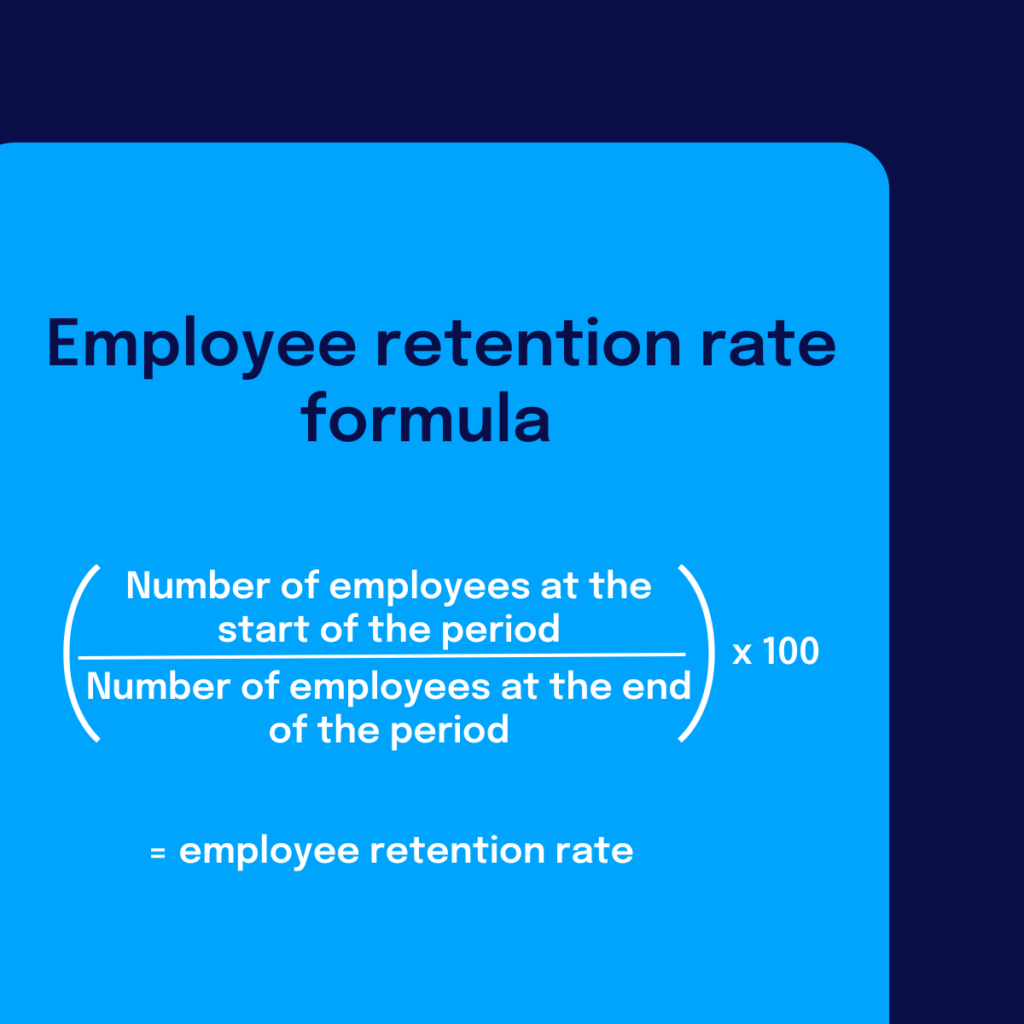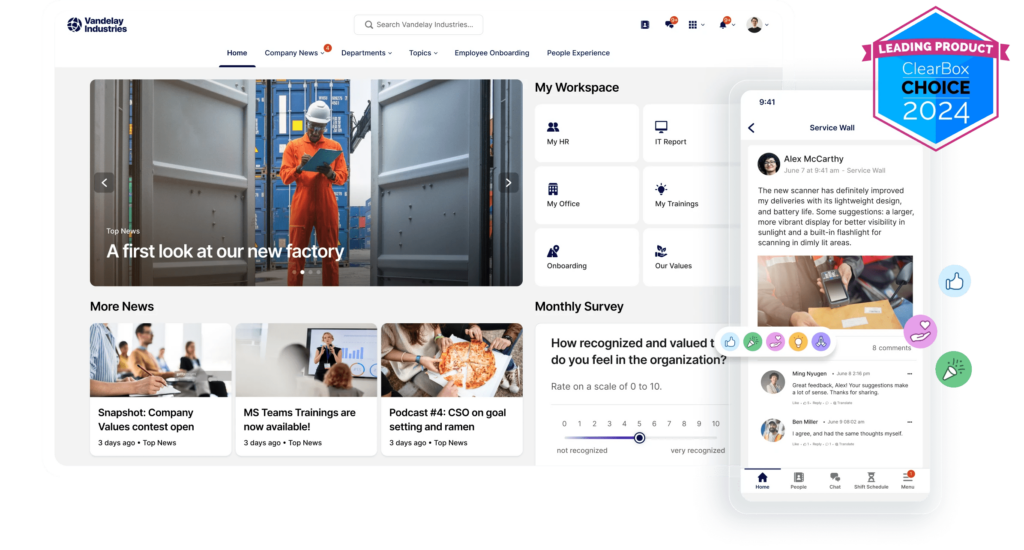How to Improve Employee Retention: The Role of Company Culture and Benefits in 16 Steps

In today’s work environment, two challenges stand out: retaining talent remains difficult, and effective employee retention strategies must be tailored to the individual. That’s where the power of employee retention comes in. Each employee is motivated by unique factors, making it crucial to move beyond traditional methods and focus on understanding and addressing the specific needs and desires of your team members.
What is employee retention?
Employee retention is an organization’s ability to maintain a stable workforce through diverse strategies, practices, and policies that can encourage employees to stick with your company for the long term.
This traditionally includes building a positive work environment, offering strong compensation and benefits, and creating opportunities for professional development. Today, however, we’re going beyond these initial methods to address the individual employee needs and concerns that can enhance job satisfaction and loyalty.
Here are several key reasons why it is so important:
Productivity and efficiency: Experienced employees understand the company’s processes and systems, which makes them more efficient and productive.
Customer satisfaction: Consistency in customer service can lead to higher customer loyalty while frequent turnover disrupts these relationships.
Company culture: A stable workforce contributes to a strong company culture and a positive and productive work environment.
Knowledge retention: Long-term employees accumulate valuable knowledge so retaining them helps ensure that in-house knowledge is preserved, maintaining continuity and fostering innovation.

Why do you need an employee retention strategy?
You need an employee retention strategy that breaks the norm to adapt to the evolving dynamics of the modern workforce, address unique organizational challenges, and stay competitive in a rapidly changing business landscape.
Today’s employees are a mix of existing and new generations. As such, they value different aspects of work compared to previous generations. Some prioritize work-life balance and meaningful work while others are happy with a high salary and top-notch benefits.
A traditional retention strategy may not resonate with everyone’s expectations. To get a grasp of where your team’s retention stands, you’ll first need to calculate the employee retention rate within your organization.
How to calculate employee retention rate
Start by choosing a period for which you want to calculate the retention rate. Common periods include annually, quarterly, or monthly. Then, note the number of employees at the beginning of the chosen period and identify how many of those are still with the organization at the end of the period.
This is the formula for calculating the retention rate:
Employee retention rate = (Number of employees at the start of the period/Number of employees at the end of the period)×100

A good retention rate is typically around 90% or higher. Having 10% or fewer employees leave the organization within a given time period is perfectly normal due to natural turnover like personal reasons, retirement, and career changes. Besides these scenarios, high retention rates indicate that employees are satisfied, engaged, and find their work environment positive and supportive.
Defining a bad retention rate largely depends on your industry though. Retail, for instance, tends to have lower employee retention rates. So 80-75% is still a decent retention rate in this case. For roles where traditional career advances should be made though, a bad retention rate is generally considered to be 70% or lower, meaning that 30% or more employees leave within a given time period. Some of these roles include management positions, professional services (e.g. lawyers, accountants), healthcare professionals, engineering and IT, education, sales and marketing, human resources, etc.
How to improve employee retention
Retention rates can vary widely across different industries.
You can use the stats to compare your current retention rate with your own company’s historical data. Set specific retention targets based on your strategic objectives and measure your performance against these targets. Don’t forget to consider the financial and operational impact of your turnover rates to establish realistic and beneficial retention goals.
As long as you’ve lost one or two employees, it means you still have to work on reducing employee turnover.
Let’s see just how you can do this today! Plus, some tricks on adapting your own employee retention program to the new and upcoming ages.
Top 16 innovative employee retention strategies you should try
Let’s clarify this from the start: Improving employee retention requires a multifaceted approach. A bit of this. A bit of that.
Here are several strategies to help enhance employee retention for every stage of the employee lifecycle.
1. Be aware that compensation still matters
In the past, people would often leave a job they were happy with just to earn a higher wage. Today, stats show that switching jobs doesn’t ultimately lead to higher earnings. But most employees don’t know that. They’ll likely jump at an opportunity outside of your organization for a better salary.
Next steps for you:
Compare your budget to industry benchmarks to make sure you can offer a great salary from the start and/or create a strategy for providing regular pay raises. For increased trust and transparency, many companies are offering standardized pay across the entire organization.
2. Offer benefits that are more than health insurance and a decent retirement plan
This is what traditional employee benefits used to look like:
Medical insurance
401(k) or 403(b) plans
Vacation days and sick leave
Performance bonuses and stock options for management-level employees
Parental leave
Commuter benefits
Employee discounts
Now here’s what today’s job ad looks like:
Job description for a Raisely gig
A 4-day week, remote-first opportunities, and even a calm company promise.
Next steps for you:
Understand what your ideal employee wants — way before you hire them. That involves taking a look at their role and even their age to see what type of work environment they’d be attracted to and what regular perks you can offer to keep them.
3. Rethink your preboarding and onboarding process
You should focus on retention as early as during preboarding. Your first interactions with a potential hire can change the way they see your company or leave them with a mere “I’m just here for the money” mentality. Skipping to day one, a well-structured onboarding checklist sets the tone for their entire tenure. If new hires feel welcomed, supported, and well-integrated into the company, they’re more likely to develop a strong sense of loyalty and commitment.
Next steps for you:
There are lots of things you can try: equipping new hires with all the resources they need, creating tailored learning programs, scheduling regular one-on-one meetings with managers, etc. Nothing’s as effective as setting up an onboarding buddy program. Whether you opt for a mentor or a future teammate, having someone new employees can turn to can help them integrate and avoid initial hurdles.
4. Keep preparing for remote and hybrid work
The best employees will prefer being part of a distributed workforce. That’s simply because they’re great at their role and can afford to be picky when it comes to choosing one. 95% of employers back this up and report that remote work positively influences employee retention.

Next steps for you:
Embrace remote work and develop your own work-from-home rules. Communicate clear remote work policies, including expectations for availability, communication protocols, and performance metrics. Prefer a hybrid model? Define how hybrid work will be managed, specifying when employees are expected to be in the office versus working remotely.
5. Create more and better growth opportunities
Providing avenues for growth keeps employees engaged and motivated, reducing turnover rates. Empowered employees contribute fresh ideas and innovations, helping you stay strong in the market and attracting top talent.
Next steps for you:
Evaluate current development programs and identify areas for enhancement. For a small team, you could encourage mentorship and coaching to foster skill growth and leadership. With a larger company or budget, consider implementing personalized development plans aligned with employees’ career aspirations.
6. Guarantee transparent communication
Transparent communication builds trust between employees and leadership, reducing uncertainty and fostering a positive work environment. Plus, your employees will feel valued and engaged when they have access to information about company goals, decisions, and changes.
Next steps for you:
Create a culture where employees feel comfortable asking questions, providing feedback, and expressing concerns. Set up an employee communication app like Staffbase to help develop a culture of communication and keep your team connected.
7. Foster a positive work environment
Not everyone’s a fan of workcations while others might prefer to meet up with their colleagues every day after work. That’s why your benefits as well as day-to-day activities should promote a supportive and inclusive workplace culture where employees feel valued and respected. Alternatively, you should talk with your team to see what makes them happy and eager to show up for work each time.
Next steps for you:
Conduct regular surveys or feedback sessions to understand which aspects of the company culture employees value the most and what would make them feel more included and appreciated. Remember, you want your team to bond. However, you shouldn’t force anyone into doing something that makes them uncomfortable — even when that’s just a laser tag game.
8. Train your leaders
Focus on leadership communication. Retention often starts with leadership. Employees look up to leaders to understand how they’ve evolved within the company and even why they might have left it. So while one of the ways to improve employee retention involves keeping your managers, they should also be encouraged to adapt to your new policies for maintaining a happy and content workforce.

Next steps for you:
Train managers and leaders to be effective, empathetic, and supportive. Not sure where to start? An employee survey might show you where attention is required. By sharing and taking action on constructive feedback, you’ll encourage leaders to provide open and transparent communication with employees to help them improve and feel supported.
9. Address any challenges before they escalate
Prompt resolution of issues prevents them from festering and affecting employee morale. When issues are left unresolved, they can create dissatisfaction and demotivation among your employees. Conflict and unaddressed issues in the workplace can significantly impact both individuals and the organization as a whole in any number of ways:
Reduced productivity and morale
A negative impact on work relationships (that can go beyond work)
The dreaded increased turnover
Poor teamwork and communication
Damage to your organization’s culture and reputation
Extended legal and compliance risks
Next steps for you:
Ensure a safe and healthy work environment, free from harassment and discrimination. Drop an eye over our list of ten effective ways to boost workplace safety culture with an employee app.
10. Conduct stay interviews
Stay interviews are talks between a manager and an employee who has chosen to remain with the organization. Say you’ve got someone who’s been with the team for five years and you want to understand why they’ve stuck with you for so long.
Next steps for you:
Conduct stay interviews to understand why employees stay with the company and what could make their experience even better. Make sure you ask: “What do you enjoy most about your role here?” “How would you describe the work environment/team culture here?” and “Do you have any suggestions for how we can enhance employee satisfaction or improve the workplace experience?”
11. Build better employee connections
Everyone wants to have friends at work. 30% of employees say their greatest concern about forming friendships at work is the potential emotional pain of losing those friendships once the job concludes. So it’s safe to say some people stay with a company because of the people they work with and that they’ll more easily leave when those people are no longer there.
Next steps for you:
Using the right employee communication platform is a given. What matters beyond this basic requirement is the type of activities and events you use to strengthen employee relations. You should be sure to plan social gatherings and happy hours to encourage informal interactions and foster camaraderie among colleagues. Want more worthwhile moments? Organize team-building activities such as retreats, workshops, or virtual team challenges to build trust.
12. Always keep an eye on trends
The 4-day work week has been gaining a lot of ground, leaving professionals wanting to give it a try. Even some of the least daring companies have implemented a 4-day work week every month or for an entire month. But then there are the less obvious changes and patterns in the way employees think. Imagine you’ve got a team where 60 percent of employees are parents. Caregiving service costs are rising and they’re struggling to pay for everything. That’s where you come in to spot these changes, adapt, and offer the right perks to meet these needs.
Next steps for you:
Talk to your team and keep an eye on the news before you work on your next employee retention plan. Your team might be experiencing a lot of internal conflicts or maybe they’re just eager to try out a new work model. To show you really care, listen and deliver before anyone even asks.
13. Reward employees the way THEY want
Employees are more likely to be motivated and engaged when they receive rewards that align with their personal preferences and values. When employees feel recognized and rewarded in meaningful ways, they’re less likely to seek employment elsewhere. Customizing rewards to fit individual preferences can lead to higher job satisfaction.
Next steps for you:
Allow employees to choose from a variety of recognition options when they achieve milestones or exhibit exceptional performance. This can include gift cards to their favorite stores, experiences such as a spa day or concert tickets, or even personalized thank-you notes. Whatever floats their boat.
14. Focus on the true purpose behind your employee retention efforts
Purpose is what you make of it. Besides defining your true goals, you’ll want to ensure that they are communicated consistently and integrated into every aspect of your business operations. When your employee retention goals align with the overarching purpose of your organization, your retention strategy will go beyond just keeping employees. A true retention effort should aim to foster a committed and engaged workforce.
Next steps for you:
Got a list of employee retention strategies you want to try? Write out a goal for each of them. Then, see which of these goals align with your overarching business objectives. This will help you prioritize the efforts you should focus on next. Starting small means you can dedicate more time and resources to implementing a strategy and analyzing its results.
15. Make room for meaningful work
Most people work because they need a secure income stream. But these days, they also want to be a part of something bigger. Helping employees understand how their roles contribute to the broader mission and goals of the organization can enhance employee engagement and motivation. But you need a true mission to begin with.
Next steps for you:
Define how a meaningful mission looks for you. And if you don’t know, ask your team! Allow employees to participate in or lead projects that align with their personal values and the company’s mission. This will foster a deeper connection to their work and the organization.
16. Implement a dynamic employee recognition system on your intranet
Publicly acknowledging employees’ achievements and contributions on the intranet can significantly boost their morale and motivation. Frequent updates and announcements of employee achievements can also keep the intranet dynamic and interesting, encouraging regular visits. Visible recognition can highlight potential leaders and encourage employees to develop their skills and career within the company.

Next steps for you: Set up an intranet system that can help you keep all communications and rewards in one place while offering employees a tailored and personalized experience. Use the intranet to publicly recognize employee achievements, milestones, and contributions. This can be in the form of shout-outs, awards, or badges and it will allow employees to recognize each other’s efforts through a peer-to-peer recognition feature.
Improve your employee retention strategy with internal comms
Notice one common part of these best employee retention strategies we’ve suggested above? Communication.
An effective employee retention strategy hinges on robust internal communication. Clear, transparent, and engaging communication not only fosters a positive work environment but also strengthens the bond between employees and the organization, leading to increased job satisfaction and reduced turnover.
So, what will your future employee retention and engagement strategies look like when you focus on internal comms?
Helping new hires understand and integrate into the company culture quickly and smoothly
Promoting and maintaining the company culture through a shared mission and narrative
Distributing information about training programs, workshops, and other professional development opportunities
Encouraging knowledge sharing through internal communication channels allowing employees to learn from each other
Providing more opportunities for employees to share their thoughts, concerns, and feedback
Keeping employees updated on company performance, strategic changes, and plans
Explore how Staffbase can transform your internal communication and improve employee retention by booking a demo.









